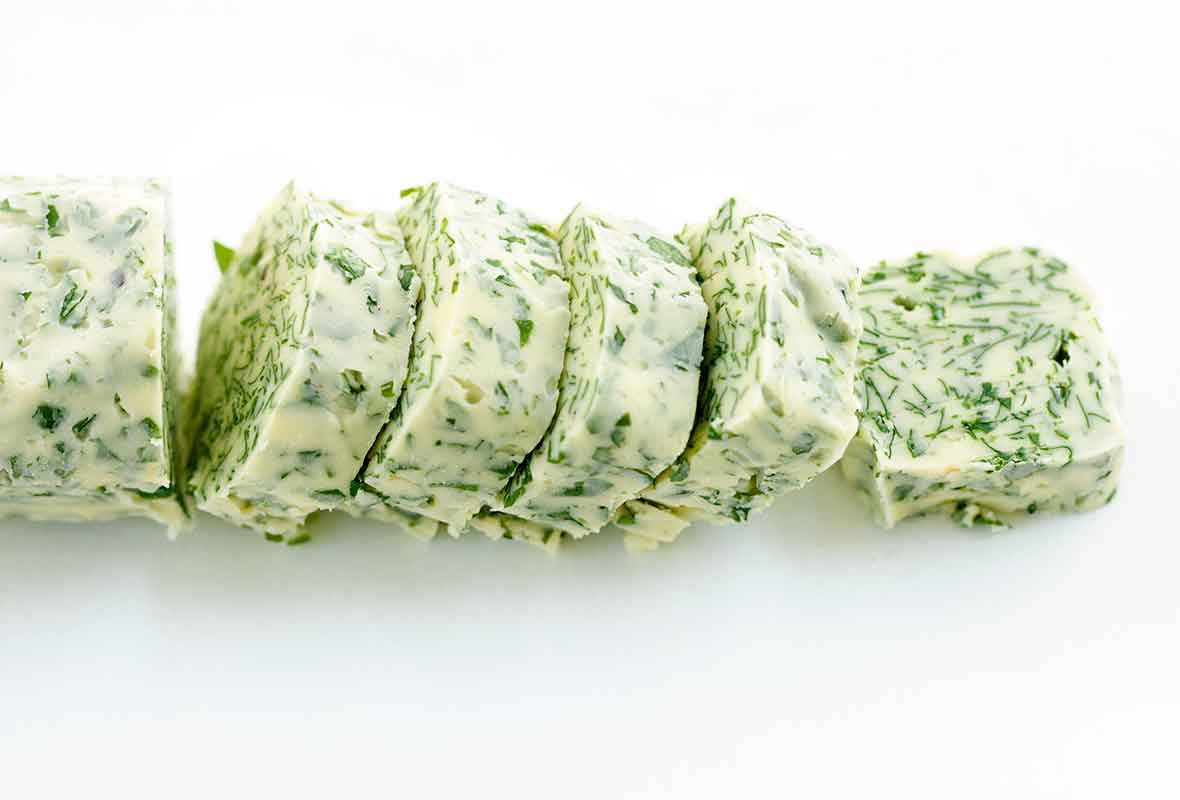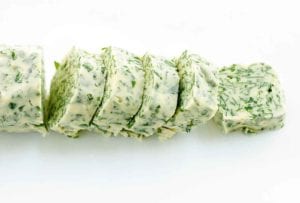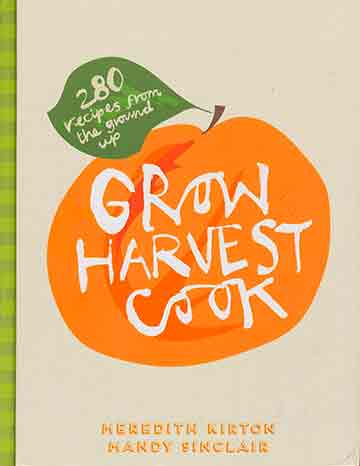
This parsley butter is a simple yet stunning example of something known as compound butter, which is essentially just butter into which you stir or mash in something flavorful that you happen to have on hand, such as garlic or herbs. It’s a handy little thing to keep on hand for embellishing all sorts of things, whether you’re facing a mad rush to put a weeknight winner of a dinner on the table or expecting your husband’s best friend and his third wife for Sunday supper.–Renee Schettler Rossi
How To Use Compound Butter
This may just be the simplest compound butter we ever did see. But don’t let that mislead you. It may also be the loveliest compound butter we ever did try. And boy, did we ever try it, on all manner of things, including…
Tucked beneath the skin of roast chicken
Dabbed on boiled new potatoes
Dolloped atop seared or grilled ribeye steak
Slathered over corn on the cob
Tossed with roasted asparagus
Slid into the pan as we cooked an omelette
Spooned onto warm green beans
Stirred into warm rice
Plopped on broiled fish fillets of all sorts
Lavished on a hunk of warm no-knead 5-minute artisan bread
Shall we go on?
Want to Save This?

Parsley Butter
Ingredients
- 1 stick unsalted butter, at room temperature
- 1/4 cup loosely packed parsley leaves, finely chopped
- Salt and freshly ground black pepper, to taste
Instructions
- Whip or beat the butter with parsley together in a bowl and season with salt and pepper. Spoon into a large piece of parchment paper or plastic wrap, roll it into a log, and seal the ends. Alternatively, you can simply smoosh the butter into a ramekin or other small dish, leveling the surface with a knife.
- Refrigerate until firm, about 1 hour. Keep your stash of parsley butter in the fridge for up to 1 month or freeze for up to 3 months. To prevent icky aromas from infiltrating your butter, wrap the parchment paper (or ramekin) tightly with plastic wrap or aluminum foil. Slice or set out on your dinner table while the butter is still cold.

Explore More with AI
Nutrition
Nutrition information is automatically calculated, so should only be used as an approximation.
Recipe Testers’ Reviews
This parsley butter was fabulous! Parsley. Butter. What’s not to like? And it was a nice, easy recipe to make during a busy week. The parsley added a wonderful savory note, with a hint of green freshness, to the butter. I haven’t had a chance to do more than spread the butter on warm bread, but it elevated the bread to something sublime. I can’t wait to try this on fish. My teenaged son suggested we do parsley and basil in the next one. I see some killer garlic bread in our future this summer.
To shape the butter, I placed it in a line down the center of the parchment. I folded the paper over the butter and then used the side of a ruler to press the parchment against the butter. Then I pulled the paper toward me, compressing the butter and tightening the parchment against itself and the ruler. It worked beautifully to make a smooth, even log.
Well, this recipe isn’t rocket science, but it’s still a change from everyday butter, plus it looks pretty—and pretty is good! The first time I used this, I added it a pan along with some olive oil to brown some chicken. I didn’t think it would make that big of a difference, but boy was I surprised when I turned the chicken over and there were all these flecks of green parsley on the nicely browned chicken skin! I also used it to flavor some brown rice, adding about a tablespoon butter to the brown rice which lent it instant flavor and color. It would be good on a nice steak—just plop a pat of the parsley butter on top as the meat is resting…yum! I really love the idea of compound butters as the possibilities are kind of endless. This version with parsley, salt, and pepper is definitely is a good one to keep on hand!
This is a great and easy technique that I think everyone should know. It also reminded me how useful compound butters are to have on hand! I don’t have a whisk or electric beater so I left the butter at room temperature for about 30 minutes before I mixed in the herbs. (I actually used chives in place of parsley.) I incorporated the herbs with a rubber spatula, which took about 2 minutes to make sure they were evenly distributed. To make the log, I placed the butter in a long shape in the middle of the parchment paper and placed it horizontal to me. I folded the parchment over the top and squeezed the paper underneath the roll, tightening the parchment so that it rolled naturally into a round log. (It’s hard to explain!) I’ve only used it to cook an omelette so far, but I can see SO many uses. Imagine a compound butter underneath the skin of a roast chicken!
I tend to forget about simple recipes like this one. I put everything in a food processor and gave it a whirl until whipped and blended. Then I spooned it into a log shape on a piece of parchment. I folded the parchment over the butter and used it to shape the log. I let it chill for 1 hour before using. I put this on steak that night and it was nice. I also used it on grilled fresh corn on the cob and also on some boiled baby new potatoes. It added that extra little touch to make a simple meal special.
This parsley butter recipe makes a simple compound butter that you can keep on hand for anytime. I topped roasted asparagus and grilled chicken thighs with the butter. I think any flavors could be added with the parsley for a lively mix. I think I’ll mix in a few cloves of crushed fresh garlic next time. I placed the butter in the center of the parchment paper and rolled it, forming a log. I twisted the ends before freezing. I actually prefer using plastic wrap to form compound butter rolls as it seems to conform to the log shape better than parchment paper.
This is an easy way to prepare a basic cooking element in advance. I used it to saute chicken and add a little flavor, but I also think it would be great with zucchini or squash. I spooned the butter into a log shape and wrapped it up like people do burritos and it worked pretty well. If you’re a frequent user of parsley for sautes, this one is for you.
An easy way to fancy up your butter and at the same time use some of those terrific herbs from your garden or your farmers market. Just 5 minutes now and you can have lovely butter to take out for company, or to treat yourself. And there’s so much room for play. Aren’t sure you want a full 8 tablespoons parsley butter? Make less! You’re a purist and feel no need for the salt and pepper seasoning? Leave it out! You have other herbs that are in your garden or are your favorites? Use them in addition or instead! Suggestions for use include slathered atop bread, toast, or crostini; melted atop steamed vegetables; sautéed with mushrooms; plopped into a baked russet or sweet potato; scramble an egg in it, or fry the egg, or make an omelet; use it instead of plain butter when prepping a grilled cheese sandwich or croque monsieur or croque madame; garlic bread; use as the base between the bread and the topping for Scandinavian open-faced sandwiches. Coincidentally, my wonderful and creative friend Alix, who is also an excellent cook and on-the-fire escape urban gardener, was making compound butter on the East Coast as I was experimenting at home in the Midwest. In addition to parsley, she used rosemary, mint, basil, oregano, and thyme. For my part, I’m dreaming of dill. And that’s just green herby flavors. Then consider spices (espelette pepper), fruits (chopped dried cranberries), cheeses (Parmesan), other vegetables (the allium family: scallions, shallots, garlic), or sweets (maple syrup, honey, agave syrup).












